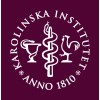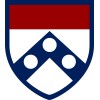
Preventive VT Substrate Ablation in Ischemic Heart Disease
Ventricular TachycardiaVentricular Arrythmia5 moreThe investigators hypothesize that preventive VT substrate ablation in patients with chronic ICM, previously selected based on imaging criteria (BZC mass) for their likely high arrhythmic risk, is safe and effective in preventing clinical VT events.

Treatment Study of AV Node Reentry Tachycardia
Supraventricular TachycardiaCompare the effectiveness and safety of two techniques for modification of slow AV nodal pathway conduction underlying AVNRT: 1) New Ablation Technique, low voltage and wave front collision mapping vs. 2) the Standard Ablation Technique, an anatomical/electrogram approach.

A Clinical Trial Utilizing Dantrolene in Patients With Ventricular Arrhythmias.
Ventricular TachycardiaThis is a randomized, placebo controlled trial of Dantrolene (N= 84 participants) to demonstrate the feasibility of using I.V. dantrolene to study the effect of RyR2 inhibition on cardiac electrophysiology, hemodynamics and ventricular arrhythmia inducibility in patients with structural heart disease referred for VT ablation. The investigators will also explore the pharmacokinetic/pharmacodynamic relationship of I.V. dantrolene and it short-term effect on specific cardiac electrophysiologic and hemodynamic parameters.

imPROving Quality of LIFe In the Long COVID Patient
Post-COVID-19 SyndromeLong COVID9 moreThe purpose of this study is to investigate the efficacy of orally administered nirmatrelvir/ritonavir compared with placebo/ritonavir to improve quality of life in non-hospitalized adult participants suffering from post-acute COVID-19 syndrome.

Catheter Ablation Versus Anti-arrhythmic Drugs for Ventricular Tachycardia
Heart Disease Structural DisorderVentricular Tachycardia10 moreSudden cardiac death (SCD) due to recurrent ventricular tachycardia (VT) is an important clinical sequela in patients with structural heart disease. VT generally occurs as a result of electrical re-entry in the presence of arrhythmogenic substrate (scar). Scar tissue forms due to an ischemic cardiomyopathy (ICM) from prior coronary obstructive disease or a non-ischemic cardiomyopathy (NICM) from an inflammatory or genetic disease. AADs can reduce VT recurrence, but have significant limitations in treatment of VT. For example, amiodarone has high rates of side effects/toxicities and a finite effective usage before recurrence. ICDs prevent cardiac arrest and sudden death from VT, but do not stop VT occurring. Recurrent VT and ICD therapies decrease QOL, increase hospital visits, mortality, morbidity and risk of death. Improvement in techniques for mapping and ablation of VT have made CA an alternative. Currently, there is limited evidence to guide clinicians either toward AAD therapy or CA in patients with NICM. This data shows significant benefit of CA over medical therapy in terms of VT free survival, survival free of VT storm and VT burden. Observational studies suggest that CA is effective in eliminating VT in NICM patients who have failed AADs, resulting in reduction of VT burden and AAD use over long term follow up. Furthermore, there is limited data on the efficacy of CA in early ICM with VT, or advanced ICM with VT. RCT data is almost exclusively on patients with modest ICM with VT, and this is not representative of the real-world scenario of patients with structural heart disease presenting with VT. Therefore the primary objective is to determine in all patients with structural heart disease and spontaneous or inducible VT, if catheter ablation compared to standard medical therapy with anti-arrhythmic drugs results in a reduction of a composite endpoint of recurrent VT, VT storm and death at a median follow up of 18 months.

Randomized Assessment of TcMS for VT Storm
Ventricular TachycardiaThree-arm randomized clinical trial comparing two strategies of TcMS to sham stimulation in patients with VT storm. The hypothesis of the study is that TcMS will reduce the burden of VT in the 24 hours after randomization compared to sham stimulation and that TcMS with theta burst stimulation (TBS) will be more effective at reducing VT burden than low frequency TcMS.

Auricular Vagal Nerve Stimulation for Hypermobile Ehlers-Danlos Syndrome
Functional Gastrointestinal DisordersHypermobile Ehlers-Danlos Syndrome3 moreHypermobile Ehlers-Danlos Syndrome (hEDS) is a connective tissue disorder characterized by hyperextensible skin, joint hypermobility and additional connective tissue manifestations. For unclear reasons, hEDS is associated with many gastrointestinal (GI) and autonomic nervous system (ANS) complaints such as postural orthostatic tachycardia syndrome (POTS). This study will address the clinical relationship between hEDS/Hypermobile Spectrum Disorders and autonomic regulation and see if there is a benefit of two forms of non-invasive vagal nerve stimulation therapies to reduce GI symptoms in hEDS and POTS. The study will also investigate plausible effects of these nerve stimulation therapies on gastric function and autonomic signaling.

Substrate abLatIon as Concomitant trEatment for Left Atrial Macroreentrant Tachycardia
Atrial FibrillationSLICE-LAMRT is a multicenter, prospective, randomized, double-blind trial that will be carried out in patients older than 18 years with atypical flutter suspected to be of left atrial origin. The aim of this trial is to evaluate the safety and superiority of a substrate-guided ablation procedure vs the conventional strategy guided by electrical activity. The composite primary endpoint is time to first episode of sustained atrial arrhythmia in the absence of pharmacological antiarrhythmic treatment or new ablation.

Dose Escalation for SBRT of Recurrent VT Ventricular Tachyarrhythmia - a Single Center, Phase II...
Ventricular TachycardiaThe objective of this study is to demonstrate that higher radiation doses are necessary to induce transmural scar formation which is currently assumed to be the underlying mechanism of successful long-term efficacy of VT treatment and therefore dose-escalation will lead to a significantly reduced long-term VT recurrence rate compared to the currently applied single dose of 25 Gy.

Efficacy and Safety Study of Efgartigimod in Adults With Post-COVID-19 POTS
Postural Orthostatic Tachycardia SyndromeThe study aims to investigate the safety, tolerability, efficacy, pharmacodynamics (PD), pharmacokinetics (PK), and immunogenicity of efgartigimod compared to placebo in participants with post-COVID-19 postural orthostatic tachycardia syndrome (POTS) (post-COVID-19 POTS).
